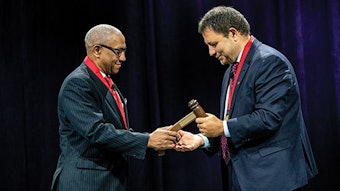Five more questions to ask your administrator
You can’t be everywhere in your practice at once. Therefore, you need to rely on your administrator to run your business. You can stay apprised by asking them some standard questions. We started with five questions a few months ago, and here are five more.

You can’t be everywhere in your practice at once. Therefore, you need to rely on your administrator to run your business. You can stay apprised by asking them some standard questions. We started with five questions a few months ago, and here are five more.
* Part one of this series can be found in the August 2019 Bulletin, page 9.
https://bulletin.entnet.org/article/five-questions-to-ask-your-administrator/
1. How many days in accounts receivable (A/R) do we have?
A/R measures how quickly a practice can get paid. The formula for calculating A/R days is as follows:
- Number of days in A/R equals the current net receivables balance divided by the average daily charge amount (A/R days = A/R balance/average daily charge amount).
- The A/R balance reflects the total amount of outstanding accounts receivables.
- The average daily charge amount is calculated by taking the total gross charges for the last year divided by 365 days.
Low A/R indicates that the practice is filing insurance and getting paid quickly. It is important to know what it is over time. For example, if you are normally in the 30-to-35-day range and it starts to increase to 60 days, it needs to be investigated. Is it one payer? Are claims not being submitted in a timely manner? Is there an underlying issue causing the lag? Your administrator should know where to start looking, be able to state the issue, and explain how they are working to resolve it.
2. What is our overhead rate?
Simply put, this is a percentage of expenses over revenue. However, all practices don’t calculate this the same. The calculation for overhead percentage is expenses divided by revenue multiplied by 100 (% = expenses/revenue X 100).
When you hear at meetings, or in the surgeon’s lounge at the hospital, that another practice’s overhead is 11 percent and yours is 68 percent, it is highly likely that you aren’t comparing apples to apples. Make sure you and your administrator know what is included in your overhead calculation and what isn’t. For example, one practice could include all practitioners and others may exclude advanced practice providers. The same goes with other practice expenses. Some practices include all expenses, while others may only include selected expenses.
3. What is our payer mix?
You should always know who is paying you and the percentage of revenue coming from that source. The calculation for payer mix percentage is amount of revenue from a particular payer divided by total revenue multiplied by 100 (% = revenue from payer/total revenue X 100).
You should track this over time. Through your contracts with insurance companies, the same procedure can be reimbursed at different rates and speeds. Your cash flow could be affected if you have a large group of private insurers and start shifting toward government payers or even self-pays. If you have a large percentage of Medicare patients, you might want to market to the largest private insurer in town for patients to improve the payer mix.
4. Tell me about my experience as a new patient in the practice.
Listen to your administrator explain what happens from the time the phone is answered for an appointment until the time a patient sees the physician. Is this the experience that you want to deliver to the patient? If not, what are the “pain points” that need to be addressed? Open the dialogue on what your vision of the experience should be with your administrator. Decide on what opportunities your practice should focus on to improve the experience for the patient.
5. Do you belong to ASCENT?
If not, why? ASCENT is a community created to empower the manager, administrator, and practice. It is composed of 1,000 managers, CEOs, administrators, and more doing the same daily things that your practice leader is doing. We have resources your manager needs so he/she doesn’t have to create procedures, policies, etc., from scratch. If your administrator tells you he/she is too busy to join, your response should be you are too busy NOT to be a part of this network.
Our discussion boards bring daily practice situations to members’ attention and, 95 percent of the time, someone has dealt with an issue you’re experiencing and can offer advice. Still not convinced? Maybe your manager is content to be doing the same things they did 10 years ago. However, practices have changed at a rapid rate, and everyone needs as much help as they can get to keep their practice in good health. Ask your manager to join today: askASCENT.org/join.
ASCENT, formerly the Association of Otolaryngology Administrators (AOA), is a support community and resource network for ENT practice management leaders. The community consists of invaluable resources, education, and people to enhance the quality and sustainability of the ENT practice. Representing more than 1,000 professionals across the country, ASCENT enables ENT leaders to advance their practices in the business of medicine. Learn more about our new look at www.askASCENT.org/OurStory.












